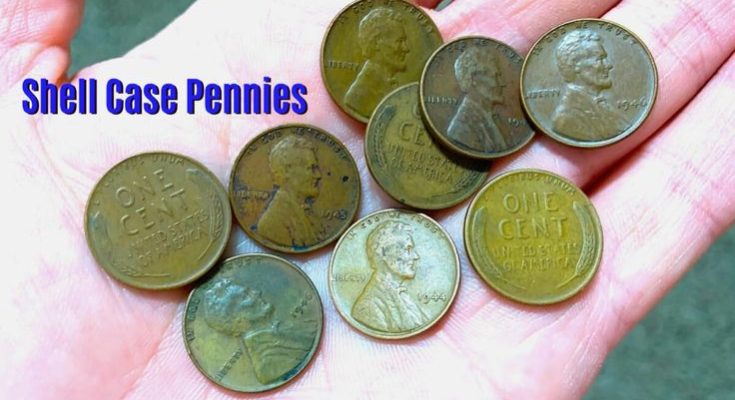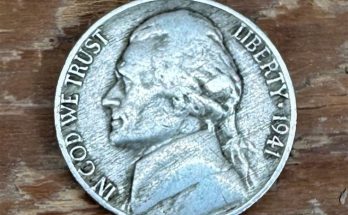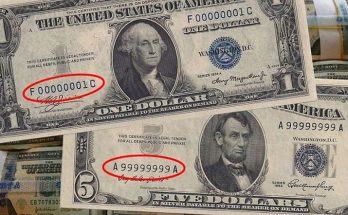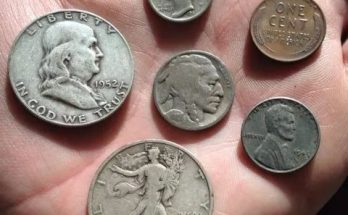Have you heard of shell case pennies?
They are wheat pennies from the World War II era that are made from spent copper shell cases used for ammunition. Yep, recycled copper!
Special relics from WWII, Lincoln shell case pennies have a direct connection to the international conflict that spanned from 1939 through 1945. And they’re awesome collectibles!
But what’s the real story behind these old pennies? Why are shell case pennies so important to collectors? And how much are they worth today?
Facts About WW2 Pennies
Here are a few key things you should know about the shell case penny:
- Shell case Lincoln cents were struck from 1944 through 1946.
- With the exception of off-metal errors, all Lincoln pennies made during that time are classified as shell case cents.
- Shell case cents are common in circulated grades and on occasion can still be found in pocket change.
Shell Case Penny Value
So, what are these old Lincoln wheat pennies worth?
Since shell case cents are really very common coins, they’re worth a little bit over face value in circulated condition — but in uncirculated condition, they’re worth a lot more!
Here’s a rundown on shell case penny values for 1944, 1945, and 1946, including all mintmark combinations:
1944 Penny
The 1944 penny with no mintmark (made at the Philadelphia Mint) became the first United States coin to ever see a mintage of more than 1 billion. A total of 1,435,400,000 were minted, and they are worth:
- 3 to 10 cents in worn (circulated) condition
- 80 cents and up in unworn (uncirculated) grades
1944-D Penny
Though not as common as the 1944 Philadelphia penny, the 1944-D shell case penny with a “D” mintmark was struck at the Denver Mint to the tune of 430,578,000 pieces and is still widely available today. They’re worth:
- 3 to 10 cents (circulated)
- 65 cents or more (uncirculated)
1944-S Penny
The 1944-S penny saw a mintage of just 282,760,000 pieces. Although this San Francisco-minted penny is the lowest-mintage 1944 Lincoln wheat cent, it’s still a highly common coin. Values for the 1944-S penny are:
- 5 to 15 cents (circulated)
- 90 cents and up (uncirculated)
1945 Penny
Though not quite as high a mintage as its 1944 Philly Mint predecessor, the 1945 Lincoln cent still saw more than 1 billion examples struck – 1,040,515,000, to be exact. Here’s what they’re worth:
- 3 to 7 cents (circulated)
- 70 cents or more (uncirculated)
1945-D Penny
This Denver-minted penny is one of the scarcer Lincoln cents from the era, though that term is used on a relative basis here. Still, a whopping 266,268,000 were minted — making this a common coin for all intents and purposes. Here are 1945-D penny values:
- 3 to 10 cents (circulated)
- 75 cents and up (uncirculated)
1945-S Penny
The scarcest of the 9 regular-issue pennies profiled here is the 1945-S Lincoln cent. Only 181,770,000 were made. And while they’re common in collections they’re among the tougher 1940s wheat cents to find in circulation. Here’s what they’re worth:
- 5 to 10 cents (circulated)
- 75 cents or more (uncirculated)
1946 Penny
The 1946 Lincoln cent is the third-most common of the shell case pennies — with a total of 991,655,000 struck. It can be found in circulation with a little searching. Here’s what these pennies are worth:
- 3 to 10 cents (circulated)
- 45 cents or more (uncirculated)
1946-D Penny
The 1946-D Lincoln wheat cent is a common shell case penny all around — with a mintage of 315,690,000 pieces. These still turn up on occasion in circulation. Here are values for this coin:
- 3 to 10 cents (circulated)
- 50 cents and up (uncirculated)
1946-S Penny
Of the 9 coins listed here, this is the only one (other than the 1945-S penny) with a mintage lower than 200 million pieces. It’s not quite as scarce as the 1945-S penny though. A total of 198,100,000 were struck — making them one of the tougher Lincoln wheat cents of the 1940s to find in circulation. Here are values for this old San Francisco penny:
- 5 to 15 cents (circulated)
- 55 cents or more (uncirculated)
Do Shell Case Pennies Look Different From Regular Pennies?
Shell case pennies were struck from copper shell casings that were spent during World War II.
It is unknown if the entire mintage of these coins was struck only from spent shell casings — or just a smaller portion of the total mintage. However, what is known for sure is the composition of the pennies made from 1944 through 1946 is different than from other years.
The composition of the 1944, 1945, and 1946 shell case pennies is 95% copper, 5% zinc. However, the bronze Lincoln cents made before and after (not counting 1943, the year steel pennies were made) also contain some tin. Though a minor difference, it’s a noteworthy one.
Virtually all circulated shell case cents look identical to any other old, worn copper pennies, with these caveats:
- Some longtime Lincoln cent collectors say they see a slight color difference between uncirculated shell case pennies and Mint State versions of other bronze Lincoln cents made before or after.
- Many veteran collectors notice more vibrant toning on the Lincoln wheat cents made from 1944 through 1946 — with many showcasing pinks, violets, and purples as well as spotty or mottled toning. This could have been caused by impurities in the metal.
Why Were Shell Case Pennies Made Anyway?
As with so many old coins, there’s an interesting story behind shell case pennies…
The onset of World War II and United States military involvement in the conflict beginning in 1941 brought about many materials shortages. Among the items rationed were certain metals. And copper was critical to the war effort for making ammunition shells.
In 1943, the United States Mint began striking pennies from a zinc-coated steel composition to save copper for the war. However, the 1943 steel cents weren’t widely embraced by the public. People complained of confusing them with the similarly colored and sized dime. Also, the coins began rusting as soon as the zinc coating wore away to reveal the steel underneath.
The United States government promised that it wouldn’t make any more steel cents after 1943 — returning to the more familiar copper-based composition. However, a popular collectible had already been born with the introduction of the steel penny. Although the public may have despised steel cents way back when, collectors love these distinctive coins today!
The shell-case pennies proved to be popular and patriotic with the public. And you might say it was a form of upcycling before the term was even officially coined!
Are There Any Shell Case Penny Errors?
Yes! There are a few notable errors and varieties to be found among shell case pennies and other Lincoln cents made during in 1944, 1945, and 1946, including:
- 1944 steel cents – The most valuable of Lincoln penny errors from the shell case cent era isn’t even a shell case cent! It’s a 1944-dated steel cent, exhibiting what happened when 1944 dies struck leftover zinc-coated steel planchets intended for use in 1943. These are very rare off-metal transitional errors that number perhaps fewer than 2 dozen in total. They are known from the Philadelphia, Denver, and San Francisco Mints and are highly valuable. Most sell for around $75,000 and up.
- 1944-D, D Over S – It’s kind of hard for any coin to follow the extraordinary 1944 steel cent in a list of error pennies, but the 1944-D, D Over S is nothing to sneeze at. It’s a tough variety in its own right, showing a “D” mintmark punch over an “S.” This is a pretty popular overmintmark variety — and even worn examples are worth $50 or more.
- 1946-S, S Over D – Another neat overmintmark variety came just 2 years after the aforementioned 1944-D, D Over S. Though this time it’s the reverse situation. The 1946 penny in question features an “S” mintmark over a “D.” While quite popular with collectors, they’re not quite as valuable as the other overmintmark penny from the era. The 1946-S, S Over D Lincoln penny is worth about $25 and up.
Tips For Collecting Shell Case Pennies
It’s not hard to collect shell case pennies, though there are many different ways to collect them:
- Most Lincoln penny collectors simply include shell case pennies in their regular penny date collection runs — which can be assembled in a coin folder (book) or coin album.
- Many collect only the shell case pennies. In these situations, the shell case cents will typically be stored in a plastic display case that also features the 1943 steel cents. These sets, often patriotically themed, are very popular with collectors who buy coins from TV infomercials, newspapers, and magazines.
- Yet another way to start a shell case penny collection is to buy one example of this variety and include it as a representative example in a type collection. This is probably the cheapest method for incorporating shell case pennies into your coin collection.
Whichever way you decide to include shell case cents in your numismatic family, you’ll surely find them wonderful coins with an amazing story and of great historic value.





